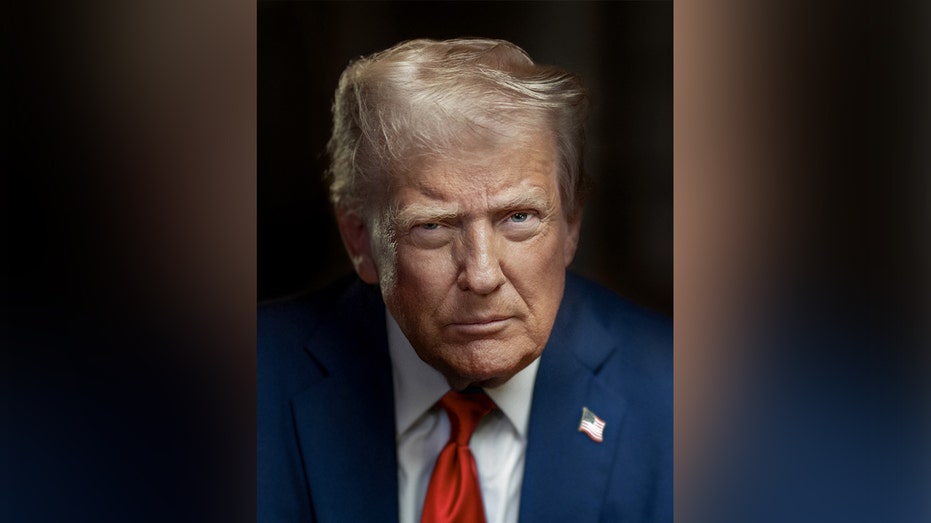Trump’s New White House Portrait Sparks Public Interest Amid Controversy Over National Portrait Gallery Leadership
President Trump unveils new White House portrait amid controversy over DEI-related dismissal of National Portrait Gallery chief.

Nearly six months into his second term, President Donald Trump has introduced a new official portrait, now displayed on the White House website. An eight-second video shared on social media Monday captured the moment as the portrait was installed in the Eisenhower Executive Office Building, part of the larger White House campus. The unveiling marks another chapter in the evolving visual narrative of the Trump presidency.
In contrast to his initial 2017 presidential portrait, which featured a smile, the previous image used at the start of his second term showed Trump in a blue suit, white shirt, and blue tie with a marked lack of visible expression. The new portrait, revealed this week, maintains the serious demeanor, but this time the president wears a blue suit, crisp white shirt, and a striking red tie. In both images, the American flag pin is clearly visible on his lapel, signaling patriotic commitment regardless of administration changes.
The new photograph was captured by White House photographer Daniel Torok. Officials confirmed that the portrait is currently on display in the Eisenhower Executive Office Building and will gradually be distributed to other federal offices across the country. This rollout underscores the tradition of updating images of the sitting president in government facilities, symbolizing a continuity of leadership for staff and visitors alike.
The unveiling of Trump’s latest portrait comes amid significant personnel changes announced last week. President Trump declared he had fired Kim Sajet, director of the National Portrait Gallery, citing her role as a "strong supporter" of diversity, equity, and inclusion (DEI). His decision, announced via social media, quickly drew attention and discussion among political observers. Trump stated, “She is a highly partisan person, and a strong supporter of DEI, which is totally inappropriate for her position. Her replacement will be named shortly.” The administration also pointed to records showing Sajet’s past political donations to several Democratic candidates and officials, further fueling debate over the intersection between politics and the stewardship of national cultural institutions.
Further complicating the situation, the White House referenced the gallery's curated caption of Trump’s presidential photo, under Sajet’s direction. The text openly notes Trump's two impeachments and acquittals during his first term, his defeat in the 2020 election, and his historic nonconsecutive return to office in 2024—making him the only president besides Grover Cleveland to achieve such a feat. The inclusion of these details in the gallery’s copy may have contributed to tensions between the administration and gallery leadership.
As Trump settles into his second term, the updated portrait and the shakeup at the National Portrait Gallery reflect ongoing efforts by the administration to shape its public image and legacy. The changes are expected to prompt further discussion about the role of art, politics, and historical interpretation in how the nation remembers its presidents.




